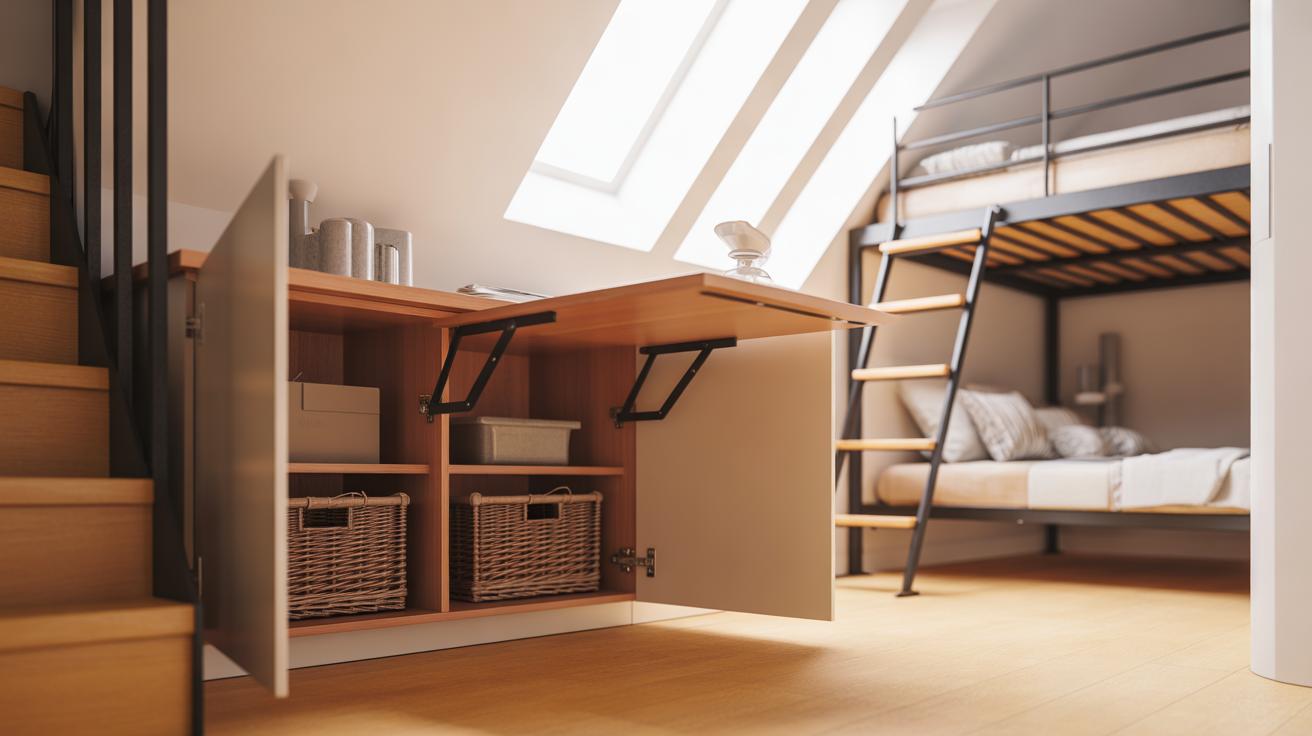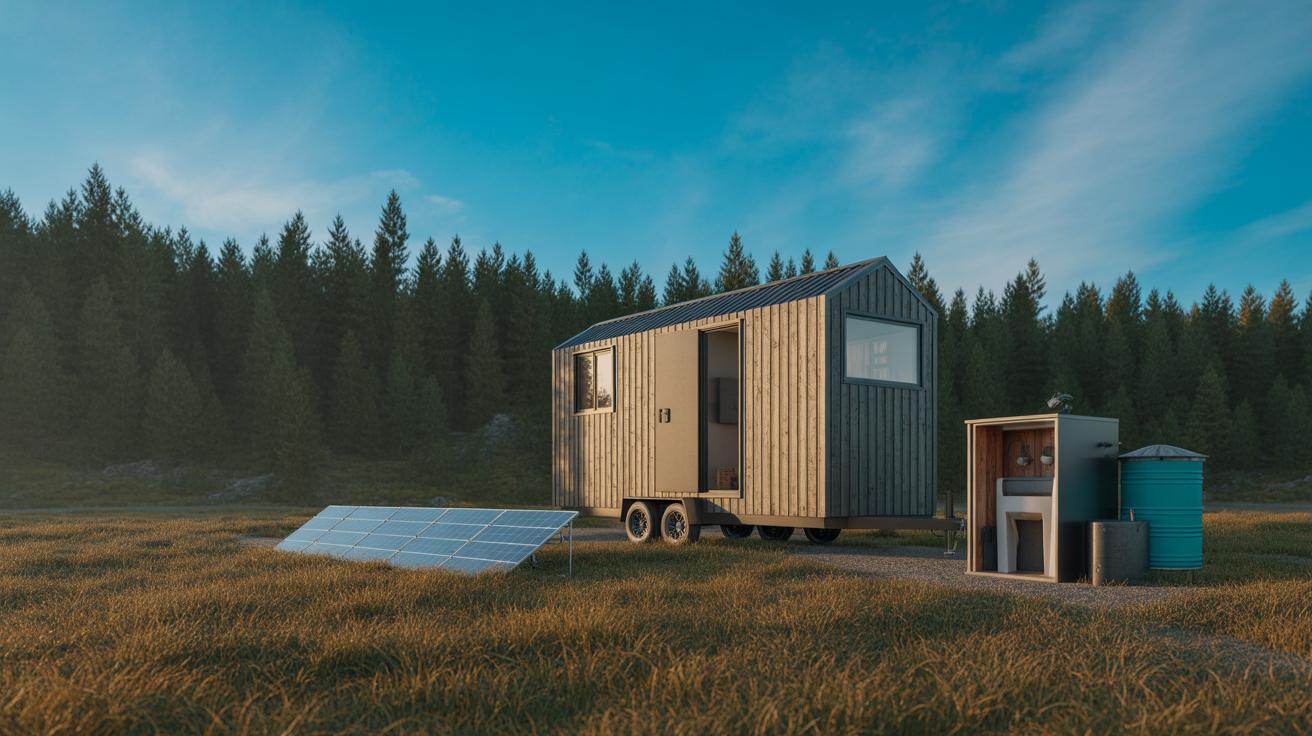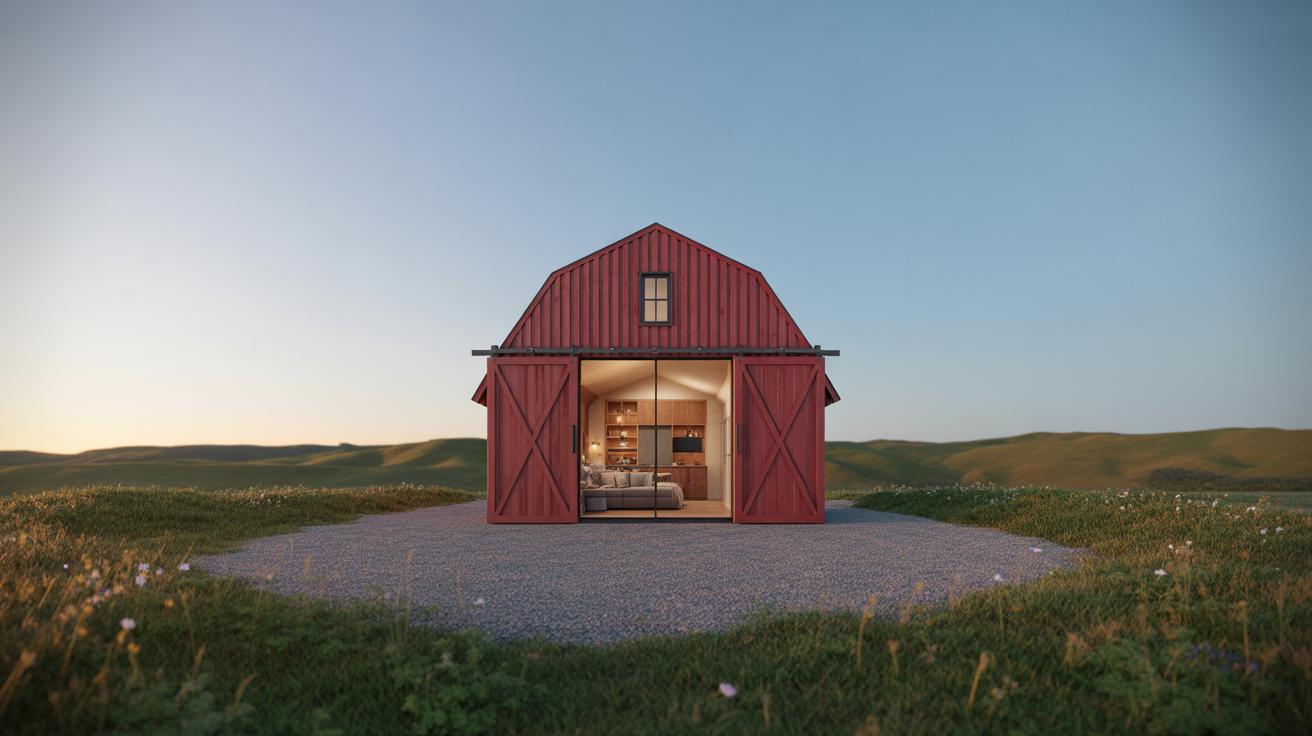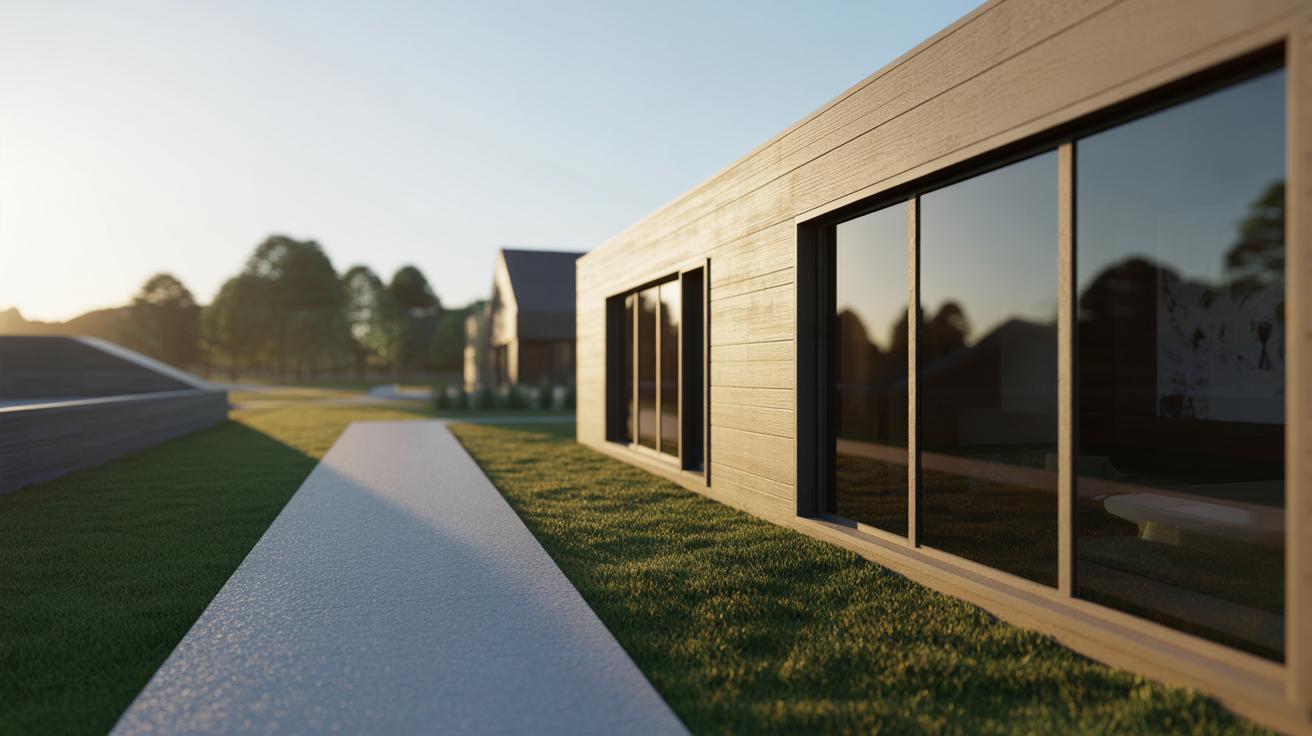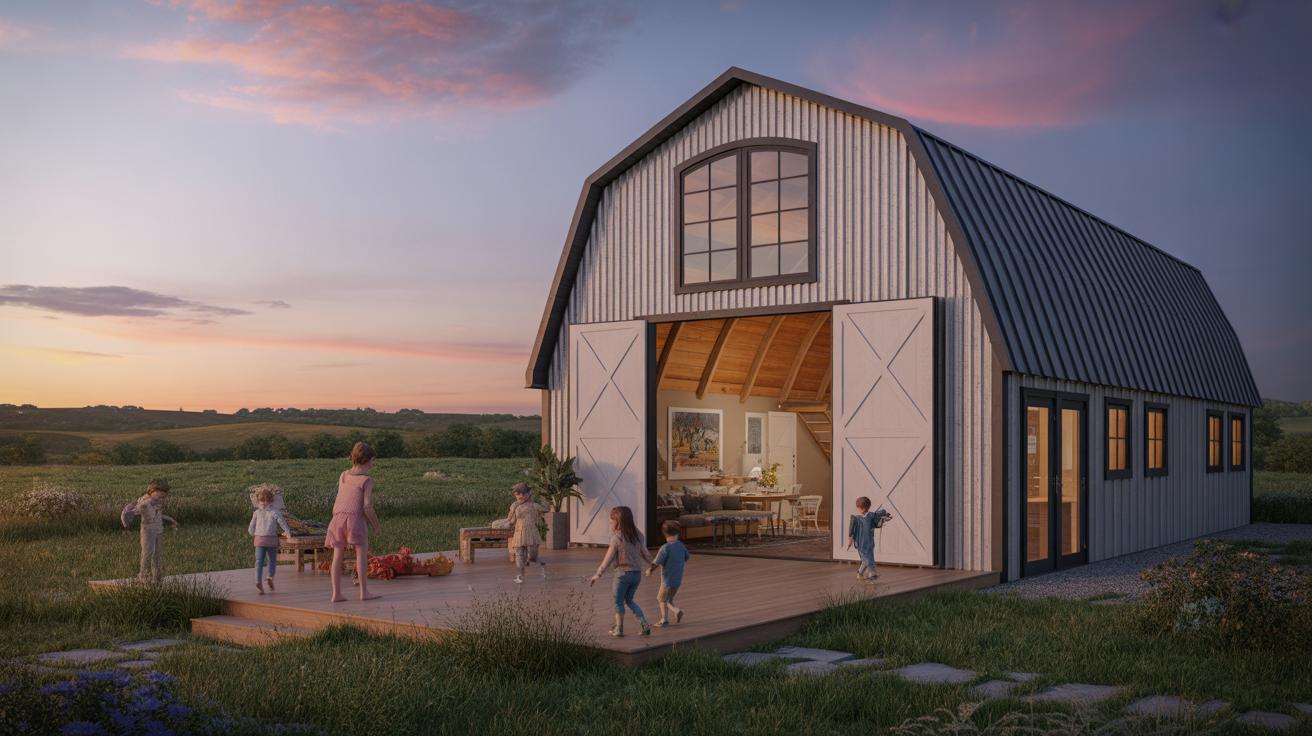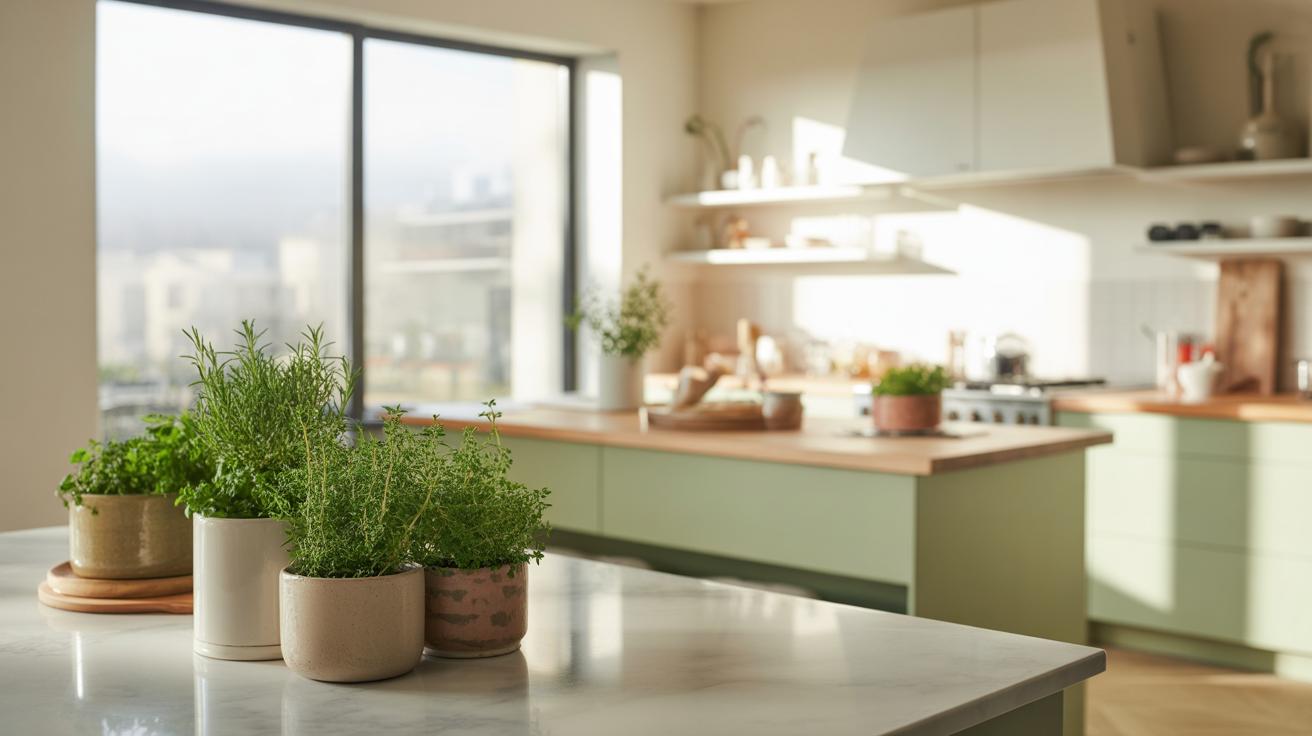Introduction
Living in a tiny house challenges you to find smart ways to use every inch of space efficiently. Small houses can feel cramped without a good plan. Every storage choice impacts how comfortable and functional your home is. Planning storage areas smartly helps you keep your space clean and organized. You gain more room to live freely. Understanding this helps you see why storage matters more than decoration in tiny homes.
Your tiny house interior should work hard to serve your daily needs. You need to think about storage as part of the home’s design. Good storage hides clutter and makes your home feel bigger. Choosing multi-use furniture and clever storage ideas can add functionality without sacrificing style. This guide explores ways you can maximize storage and create a comfortable tiny house interior that suits your lifestyle.
Understanding The Challenges Of Tiny House Storage

Your tiny house has less floor space, fewer cabinets, and limited room for standard furniture. These physical limits mean you cannot just store things as you would in a larger home. You face the challenge of fitting everything you need without creating clutter or blocking walking paths.
Many people find that clutter builds up quickly because there is no clear place for each item. Without designated storage zones, belongings can spread across surfaces and fill every corner, making the space feel cramped and disorderly. It becomes hard to find what you need or to keep the home tidy.
These challenges require careful thought about how you store items. Choosing the right storage methods can help keep your tiny house open, organized, and comfortable. Have you thought about what you really need to store? Planning ahead helps avoid constant mess and frustration in a small space.
Identifying Storage Limitations In Small Spaces
Tiny houses often have narrow hallways, short walls, and low ceilings. These physical features limit where you can put furniture and storage units. For example, bulky dressers or large cabinets often won’t fit without blocking movement or eating up too much space.
Wall space might be interrupted by windows or doors, reducing spots to mount shelves or hooks. Low ceiling heights can make tall shelving unsafe or uncomfortable to use. These factors shrink your storage options, but knowing where these constraints lie helps you plan around them.
If you want to maximize storage, you must measure the space precisely. Understanding your tiny house’s layout makes it easier to pick furniture and storage that fit without wasting room. Have you mapped your space fully before buying storage solutions?
The Impact Of Poor Storage Planning
When storage is planned badly, clutter quickly grows. Items scatter around the tiny house, making it hard to find what you need. Losing things causes extra stress and wastes time you could spend on more important activities.
Messy storage also blocks floors and areas you want to use. Cleaning becomes a chore if surfaces are piled with stuff or if items fall to the floor. You might feel trapped in your own home because every inch fills up with belongings.
Planning your storage early keeps your tiny house functional and stress-free. Think about storage needs before you move in or set up furniture. How could a clear plan for where everything belongs change how you live daily?
Utilizing Vertical Space Effectively
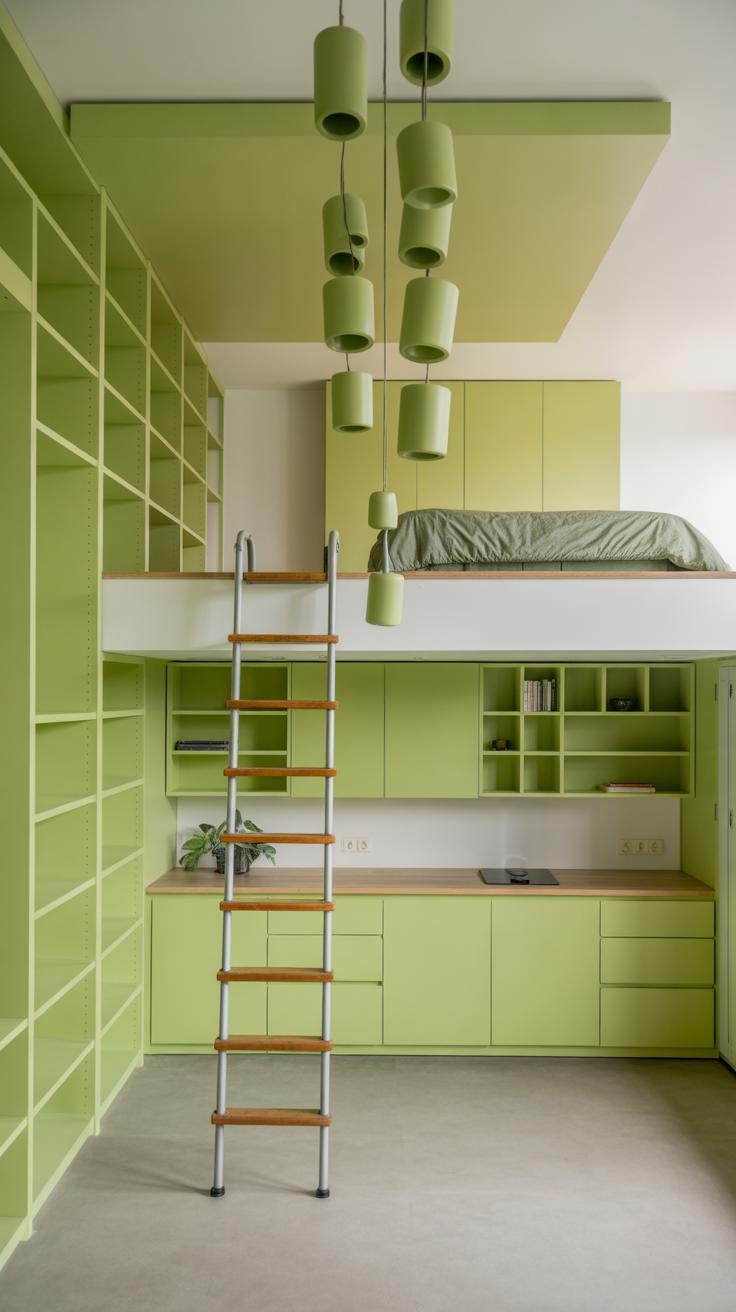
Vertical space often goes unused in tiny homes, yet it holds a lot of storage potential. Using your walls allows you to keep the floor clear, which is crucial when floor space is scarce. High shelves let you store items you don’t need daily but want nearby. Wall-mounted racks and hanging organizers can keep tools, kitchenware, or craft supplies in easy reach without crowding your counters.
Think about the backs of doors and empty corners. Installing hooks, racks, or small shelves there turns these often forgotten spots into useful storage zones. You might ask, how can less floor clutter make a tiny home feel bigger? When your floor remains open, your space looks less crowded and moves around easier. Vertical storage systems can keep your home neat while maximizing every inch.
Shelf Systems And Wall Mounts
Floating shelves work well because they don’t take up floor space and can be placed anywhere on your walls. Pegboards offer flexible storage by letting you hang tools or kitchen items, and you can rearrange hooks as needed. Modular shelving units adapt to changing storage needs and can fit snugly in unusual spaces.
When choosing shelves or mounts, pick strong materials that hold weight well. Adjustable brackets add flexibility for future rearrangements. Integrating these shelves into your design keeps the look clean. Try matching colors or materials with your furniture to make storage blend into your living area.
Creative Use Of Doors And Corners
Using the backs of doors opens more storage without changing room layouts. Hooks can hold bags or jackets, hanging pockets keep small items contained, and spice racks free up kitchen counters. These ideas add storage where you might not think to look.
Corners often become dead space, but corner shelves can fit there neatly. Rotating carousels let you reach items in tight spots, and compact bins offer more places for small belongings. Turning doors and corners into storage spots helps your tiny home hold more without feeling cluttered.
Choosing Multi Functional Furniture
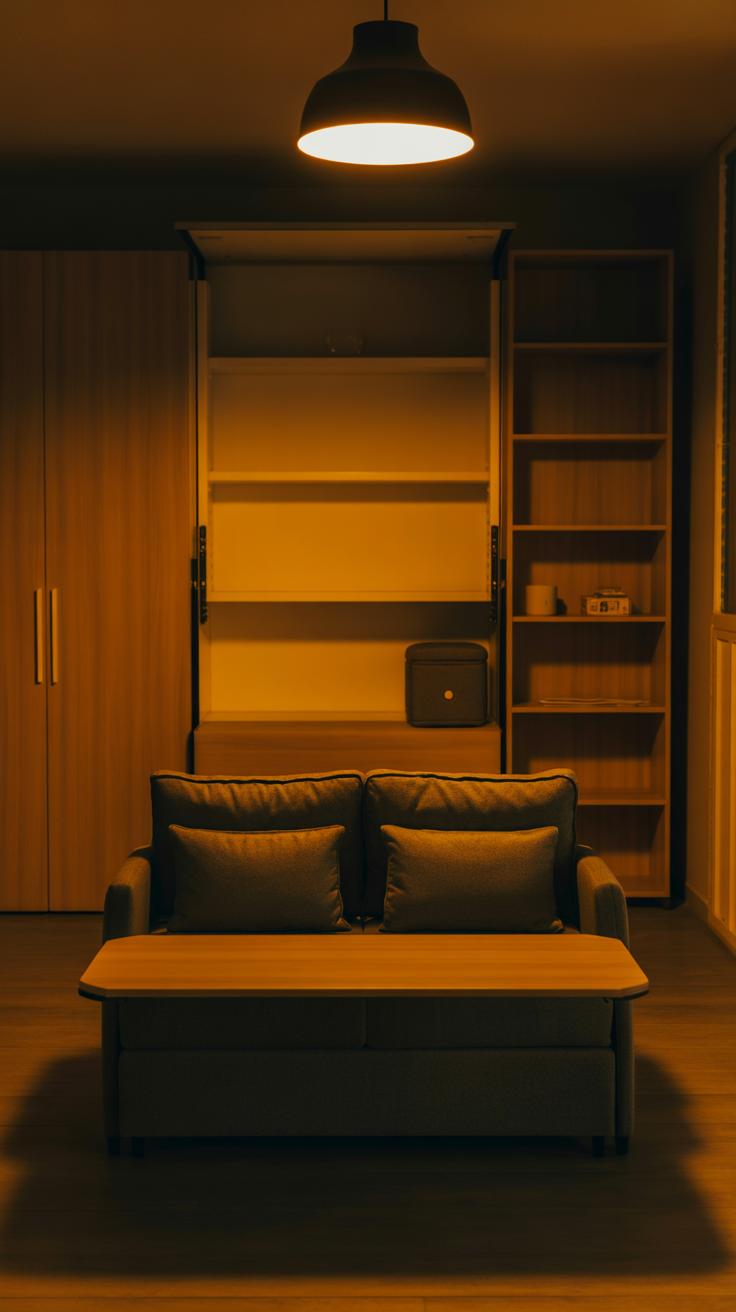
Multi-functional furniture serves more than one purpose, which makes it a perfect fit for tiny houses. Instead of filling your space with separate pieces, choose furniture that works double duty. A sofa bed lets you welcome guests without needing a spare bedroom. Storage ottomans offer a place to sit while holding blankets or other items inside. Foldable tables can switch from a dining spot to extra workspace, giving you flexibility throughout the day.
When you pick these kinds of pieces, you reduce clutter and free up valuable floor space. How much space could you save by swapping a bulky chair for a foldable one? Multi-functional furniture also helps keep your home organized. You don’t just have fewer items—you get more usable space. What’s one item you could replace with a multi-purpose version today?
Furniture With Built In Storage
Furniture that hides storage inside offers smart space-saving solutions. Beds with drawers underneath hold clothes, shoes, or linens without taking up extra room. Benches with lift-up seats make a cozy spot to sit while hiding toys or tools. Coffee tables with compartments keep magazines, remotes, and small items out of sight but within reach.
This built-in storage keeps your floor clear and your belongings neatly tucked away. You gain storage without adding extra pieces that crowd your tiny house. Consider your daily items—could they fit inside a bench or bed? Using furniture with concealed storage turns every piece into a storage opportunity.
Fold Away And Convertible Pieces
Foldable and convertible furniture adapts to your changing needs. Wall-mounted drop-leaf tables fold flat when not in use and open quickly for meals or work. Foldable desks and chairs can be stored away, freeing up precious floor space. Chairs that stack or flatten nest easily when extra seating isn’t needed.
Such pieces let your tiny house room transform on demand. Need an office corner in the daytime and open space in the evening? Fold-away options make it possible. Think about your lifestyle—when do you require extra workspace or seating? Convertible furniture means your tiny home works harder for you without feeling cramped.
Organizing Storage Zones For Daily Use
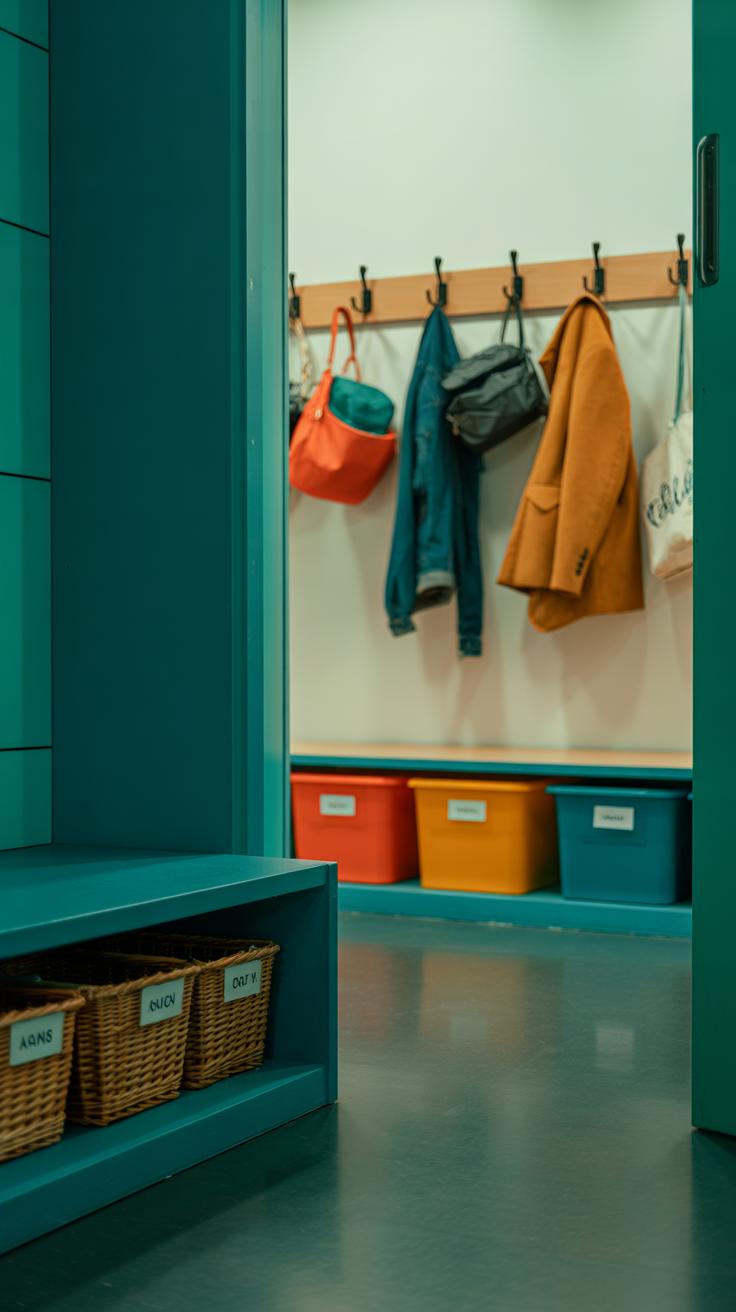
Creating specific zones for different storage needs helps keep your tiny house orderly. When you separate spaces for kitchen supplies, clothes, tools, and personal items, you reduce clutter and find things faster. Think about daily routines and where you reach for items most often. Grouping similar things together makes it easier to grab what you need without searching.
Labeling shelves, bins, and drawers speeds up your routine and prevents mess. Clear containers let you see contents at a glance. Use dividers or smaller baskets inside larger bins to keep items from mixing. Organizing by use or category prevents wasted time and keeps your small space feeling tidy and functional.
Designating Spaces For Common Items
Assign shelves, drawers, or bins to essential categories like food, cleaning supplies, clothing, and electronics. For example, keep your pantry items on one shelf, cleaning sprays in a bin under the sink, and clothes organized by type in drawers. This setup helps you find what you need quickly and makes putting things away easier.
When you dedicate specific spots for everyday items, you avoid scattered belongings and reduce the time spent hunting for things. Visual reminders from consistently used zones encourage you to return items to their proper place, maintaining order even during busy days.
Using Containers And Labels
Clear or labeled containers keep small items organized and accessible. Choose stackable containers in the same size to maximize vertical space and keep things neat. Use drawer dividers to separate socks or office supplies within a single drawer. Baskets work well for grab-and-go items like chargers or toiletries.
Labels help you quickly identify contents without opening containers. If you share your space, labeling prevents confusion and shared messes. Uniform containers make your storage look organized and simplify rearranging when your needs change. How much time could you save each day if everything had a clear place to belong?
Maximizing Underutilized Areas
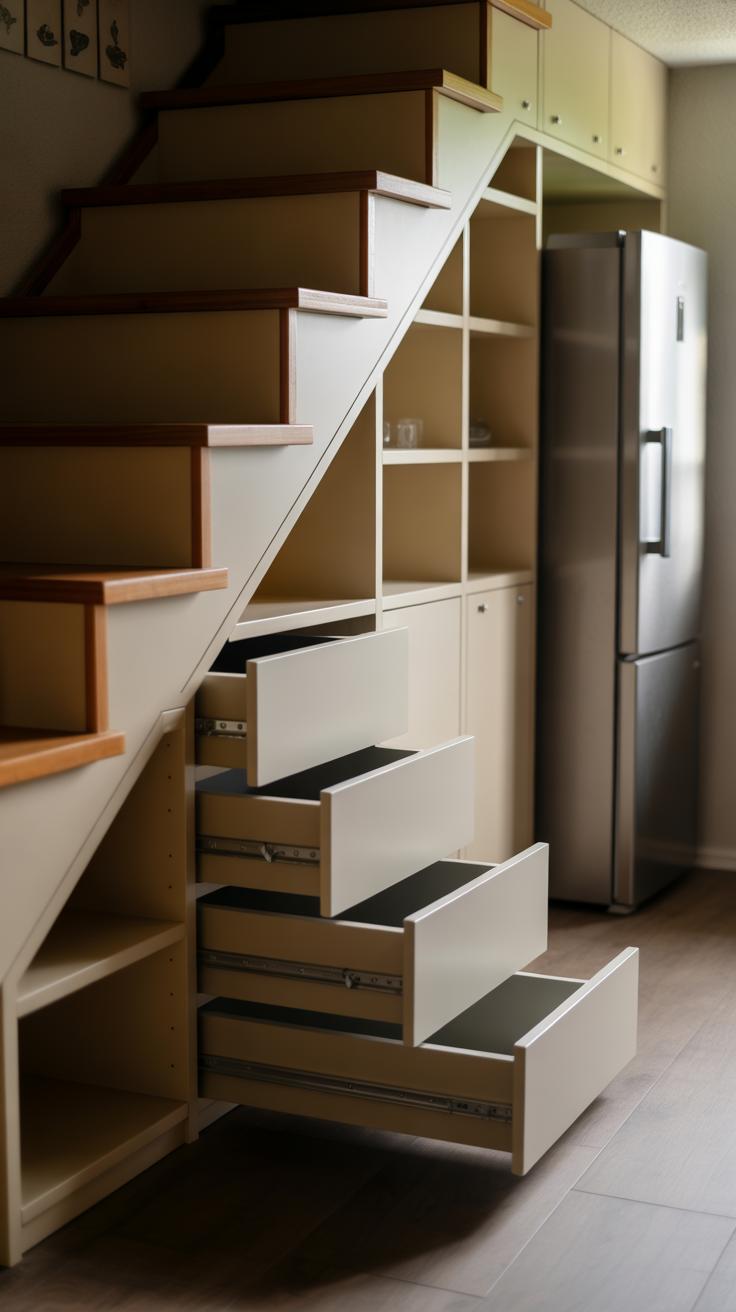
In a tiny house, every inch counts. Spaces often overlooked, like under stairs, beneath furniture, and ceiling areas offer great storage opportunities. Custom fittings can transform these spots into practical storage zones.
Design drawers or pull-out trays under stairs for shoes, tools, or seasonal gear. Under sofas or beds, consider shallow bins or sliding compartments. These keep items hidden but easy to reach, improving order without clutter.
Flexibility matters. Use storage solutions that adapt to your needs, such as removable baskets or modular shelves that fit irregular spaces. This lets you adjust storage as your lifestyle changes. How can you use your tiny house’s unique shapes and corners better?
Smart design balances accessibility and space-saving. Avoid blocking walkways or making storage hard to reach. Thoughtful planning ensures underused areas contribute to a tidy, functional home.
Under Bed And Stair Storage Ideas
Drawers built into stairs provide excellent hidden storage. You can store shoes, cleaning supplies, or rarely used items out of sight but nearby. Beds with pull-out trays or deep drawers also offer a perfect spot for seasonal clothes or extra bedding.
Choose smooth drawer slides to avoid noise and ensure easy access. Avoid sharp corners inside these spaces to prevent injury. Keep the storage low-profile to maintain comfort when sitting or sleeping.
Think about security, too. Sturdy locks or latches prevent drawers from opening during movement if your tiny house is mobile. Have you measured your items to design drawers that fit them properly? Using bins or trays inside reduces clutter and keeps small things organized.
Ceiling Hooks And Overhead Storage
Ceiling hooks let you hang items like bicycles, plants, or cooking pots without taking wall or floor space. Overhead racks give you room for bulky objects such as sleeping bags or seasonal decorations.
Ensure hooks and racks have proper weight ratings. Installing them into ceiling joists increases safety. Choose finishes and styles that match your interior, so the storage blends in instead of standing out.
This type of storage frees up valuable floor space and keeps the living area open. What bulky items could you store overhead instead of on the floor? Hanging gear or kitchen tools overhead maximizes your room’s potential without sacrificing style or safety.
Incorporating Technology To Enhance Storage

Your tiny house can benefit greatly from modern technology designed to improve storage management. Smart furniture and digital tools can help you track, organize, and access your belongings with ease. Using technology does not just save space but makes your daily life more efficient and clutter-free.
Try using materials that are thinner and stronger than traditional options. These can create slim storage spots without sacrificing durability. Some new storage furniture offers automated features, like shelves that slide out with a button or compartments that light up when opened.
Technology can also help you know exactly what you own and where it is stored. This reduces wasted space and avoids buying duplicate items. What would change if you could find things instantly, without digging through clutter?
Smart Storage Furniture And Systems
Smart storage furniture goes beyond just holding things. Some cabinets and drawers have built-in charging stations for your devices, keeping cables hidden and counters clear. LED lights inside compartments help you see what’s inside, even in dark corners.
Modular storage units that adjust through app controls allow you to change the size or layout without heavy lifting. You can move shelves or create new sections with a tap on your phone. This flexibility makes your space work harder for you.
Smart labels and retrieval systems help you quickly locate what you need. With a digital ledger, you avoid clutter and spend less time searching for items. Imagine how smooth your routine could be when every item has a place you can find instantly.
Apps For Inventory And Organization
Several apps track your possessions and where you store them. These apps remind you when to declutter or reorder supplies. This helps prevent overcrowding and keeps your storage smart and manageable.
By listing items digitally, you can avoid buying what you already have. The app’s alerts ensure you don’t overbuy and waste valuable tiny house space. You control what stays and what should go.
Apps also help you plan your storage layout and make adjustments as your needs change. How often do you lose track of items? Switching to digital tracking can save time and reduce frustration in your small living area.
Maintaining Storage Over Time
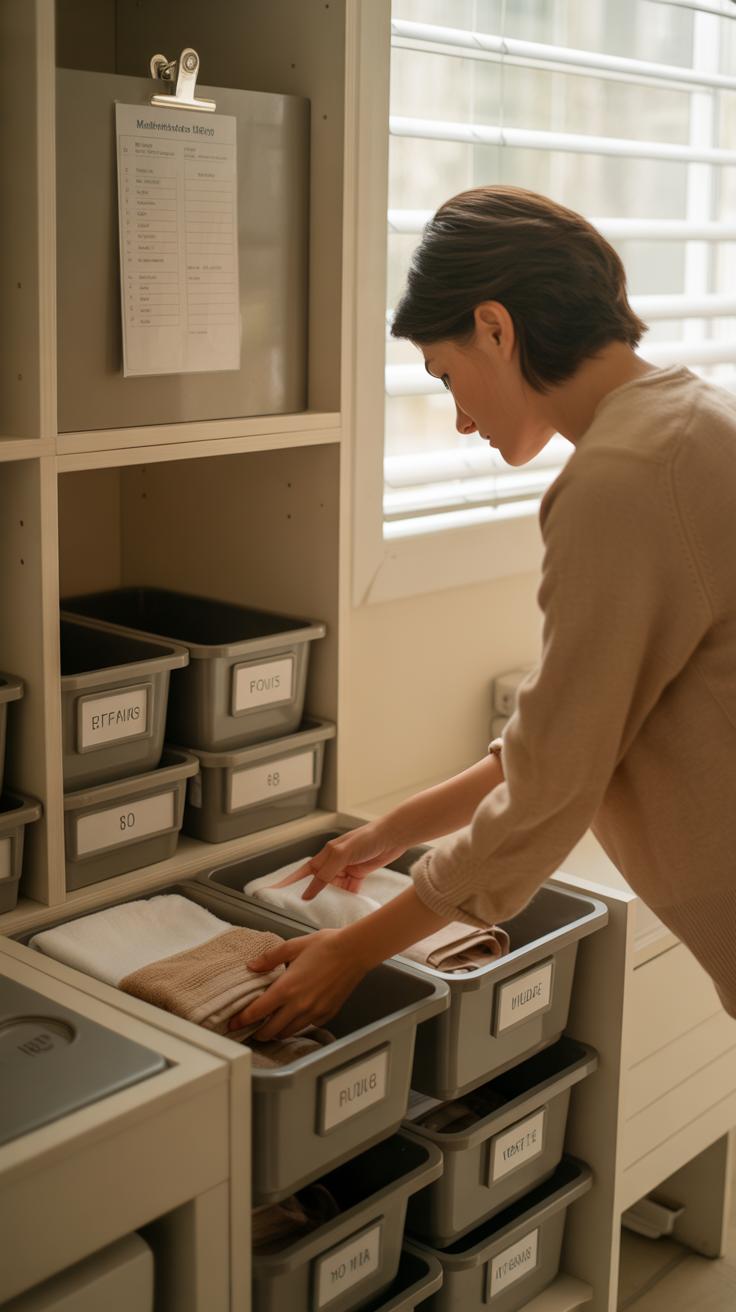
Your storage needs will change as your lifestyle and belongings evolve. To keep your tiny house organized, you must check and adjust your storage regularly. Start by setting a decluttering routine. Check spaces monthly or seasonally to decide what you still use, what can be donated, and what no longer fits your life. This habit not only clears space but also helps your mind feel less crowded.
As your needs change, be ready to swap out or modify storage systems. If you add hobbies or new equipment, consider flexible storage like modular shelves or furniture with hidden compartments. These options let you reshape your storage without needing a full upgrade. Simple habits like putting things back immediately and spot-cleaning clutter keep your home looking neat. Maintaining storage is about small, steady care that matches your changing life.
Establishing A Decluttering Routine
Pick a regular time to review your belongings, such as once a month or every season. Use these sessions to sort through items and ask yourself if you have used or need them lately. Have three piles: keep, donate, and discard. Be honest with yourself about what adds value to your daily life.
Consider how fewer, well-chosen items can open up your space. Write reminders on your calendar or set alerts on your phone to stay consistent. Over time, this routine helps avoid overwhelming clutter and keeps your tiny home feeling calm and spacious. How much stuff do you really need?
Adapting Storage Solutions To New Needs
Storage must grow with your changing lifestyle. If you start a new hobby, shop for new gear, or change your daily habits, think about how your storage fits your current needs. Look for adjustable shelves that slide up or down. Choose furniture that folds, stacks, or expands to hold different items.
You might swap out fixed cabinets with modular units that you can move or reshape. Changing just a few pieces can save space and reduce stress. When was the last time you examined whether your storage still matches how you live? Flexibility in storage means your tiny house can keep up with your life without feeling tight or cluttered.
Balancing Storage And Aesthetic Comfort
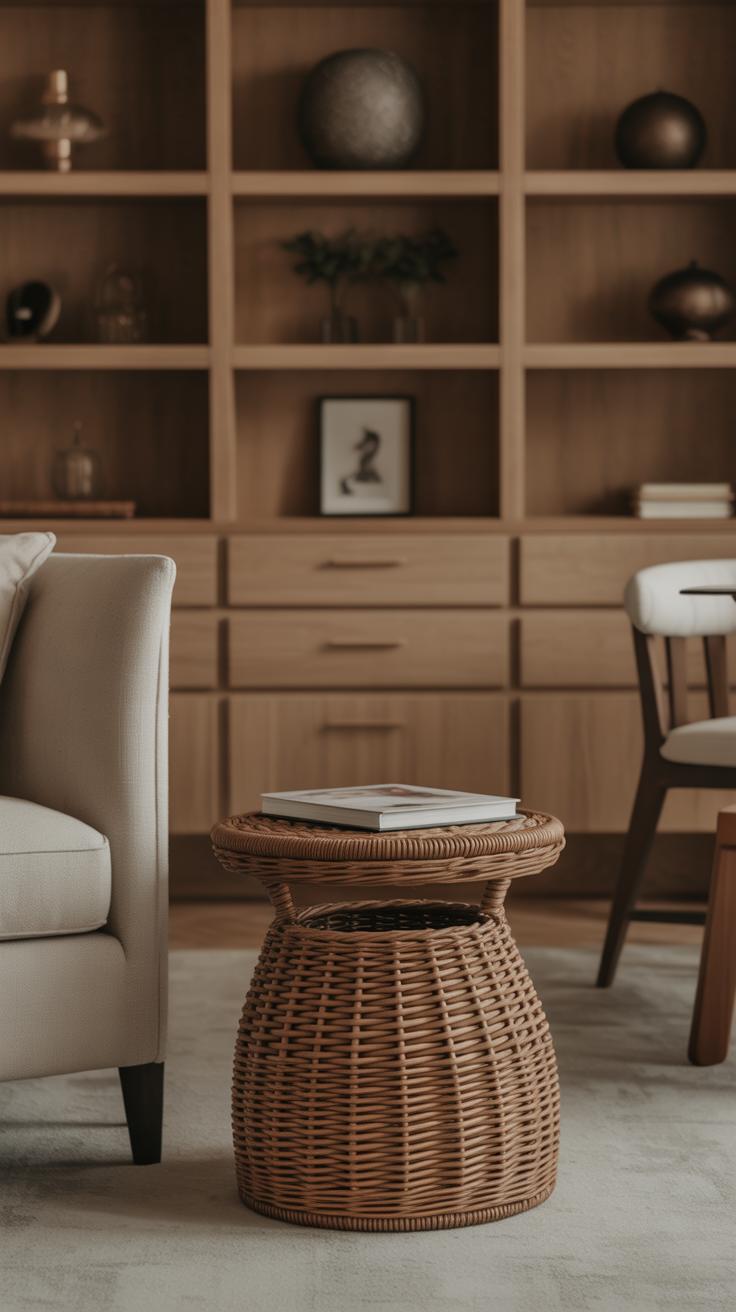
In a tiny house, storage should do more than hold your stuff; it must also enhance your living space. You want your storage to blend seamlessly with your interior, supporting a cozy and inviting atmosphere. Choose pieces that feel comfortable to use and look good in the room.
Think about matching storage furniture with your style. For example, if you prefer a modern look, sleek cabinets with clean lines work well. If you like rustic charm, wooden crates or shelves bring warmth. Consistent colors across storage items help create unity and keep the space from looking chaotic.
Clutter can quickly ruin the comfort of a small home. Find ways to hide your belongings attractively, such as under-bed drawers or built-in benches that double as storage. This keeps your space feeling open and welcoming.
Design Tips For Stylish Storage Integration
Select storage pieces that match or complement your home’s style. Uniform containers or baskets in the same color or material create a neat, coordinated look. This simple step makes your storage part of the decor instead of standing out awkwardly.
Combine storage with decorative elements. Add plants, artwork, or interesting knobs to your boxes and shelves. When storage looks intentional and stylish, it contributes to the room’s personality. You can achieve both function and beauty without sacrificing one for the other.
Ask yourself if your storage adds to the room’s look before adding it. Can it fit naturally with the furniture? Does it feel like part of the design? Finding answers helps you choose better pieces for your tiny house.
Keeping Clutter Hidden While Staying Accessible
Storage that hides clutter helps keep your tiny home calm and spacious. Furniture with doors or sliding panels can conceal mess quickly. Sliding panels work well in tight spaces with little room for swinging doors.
Use decorative baskets or boxes to store items you use often. They keep things close but out of sight and add texture or color to your area. Concealed compartments in stairs, couches, or under floorboards offer smart places to tuck things away.
Think about how often you need what you store. Keep daily items within easy reach but still hidden. This balance helps your home feel orderly without sacrificing convenience.
Conclusions
Effective storage solutions help you make the most of your tiny house interior. Using vertical space, multi-functional furniture, and creative organization methods expands your storage capacity. These ideas allow your small home to feel less cramped and more welcoming. Storage planning is key to a clutter-free space and smooth day-to-day living. Your choices will affect the overall comfort and usability of your tiny house.
With the right strategies, tiny house living becomes more practical and enjoyable. Storage does more than just hold your belongings; it shapes your living experience. Think carefully about how you want to use your space and select storage solutions that match your needs. Improving storage brings balance to your tiny household and supports a simpler, stress-free lifestyle. Apply these tips and get ready to enjoy your efficiently organized tiny home.


